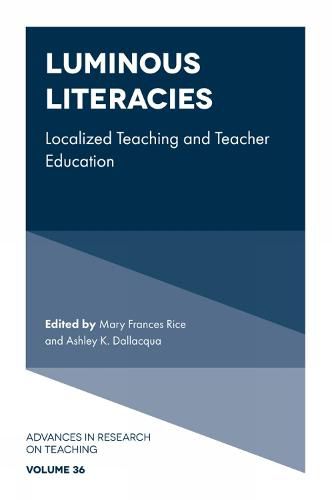Readings Newsletter
Become a Readings Member to make your shopping experience even easier.
Sign in or sign up for free!
You’re not far away from qualifying for FREE standard shipping within Australia
You’ve qualified for FREE standard shipping within Australia
The cart is loading…






Luminous Literacies shares examples of teachers and educators using local knowledge to illustrate literacy engagement and curriculum-making through scholarly accounts of experiences in teacher preparation courses, classrooms, and other community spaces in New Mexico.
This edited collection includes chapters focusing on the teaching of Native American literature to indigenous students in what used to be an assimilation school; learning to code while making connections to the bomb-building that was part of New Mexican history; using graphic novels and text sets that reflect local identities and concerns; and examining the duality of querencia/herencia with teachers from across the United States in a National Endowment of the Humanities-funded project. Teachers present counter narratives to literacy knowing and learning in places with extensive colonial histories.
These chapters provide vivid demonstrations of what literacy is, how literacies are positioned in communities and contexts, and how literacies come alive as they are taught. This is essential reading for practicing teachers, teacher education researchers, cultural studies scholars, and educational leaders.
$9.00 standard shipping within Australia
FREE standard shipping within Australia for orders over $100.00
Express & International shipping calculated at checkout
Luminous Literacies shares examples of teachers and educators using local knowledge to illustrate literacy engagement and curriculum-making through scholarly accounts of experiences in teacher preparation courses, classrooms, and other community spaces in New Mexico.
This edited collection includes chapters focusing on the teaching of Native American literature to indigenous students in what used to be an assimilation school; learning to code while making connections to the bomb-building that was part of New Mexican history; using graphic novels and text sets that reflect local identities and concerns; and examining the duality of querencia/herencia with teachers from across the United States in a National Endowment of the Humanities-funded project. Teachers present counter narratives to literacy knowing and learning in places with extensive colonial histories.
These chapters provide vivid demonstrations of what literacy is, how literacies are positioned in communities and contexts, and how literacies come alive as they are taught. This is essential reading for practicing teachers, teacher education researchers, cultural studies scholars, and educational leaders.